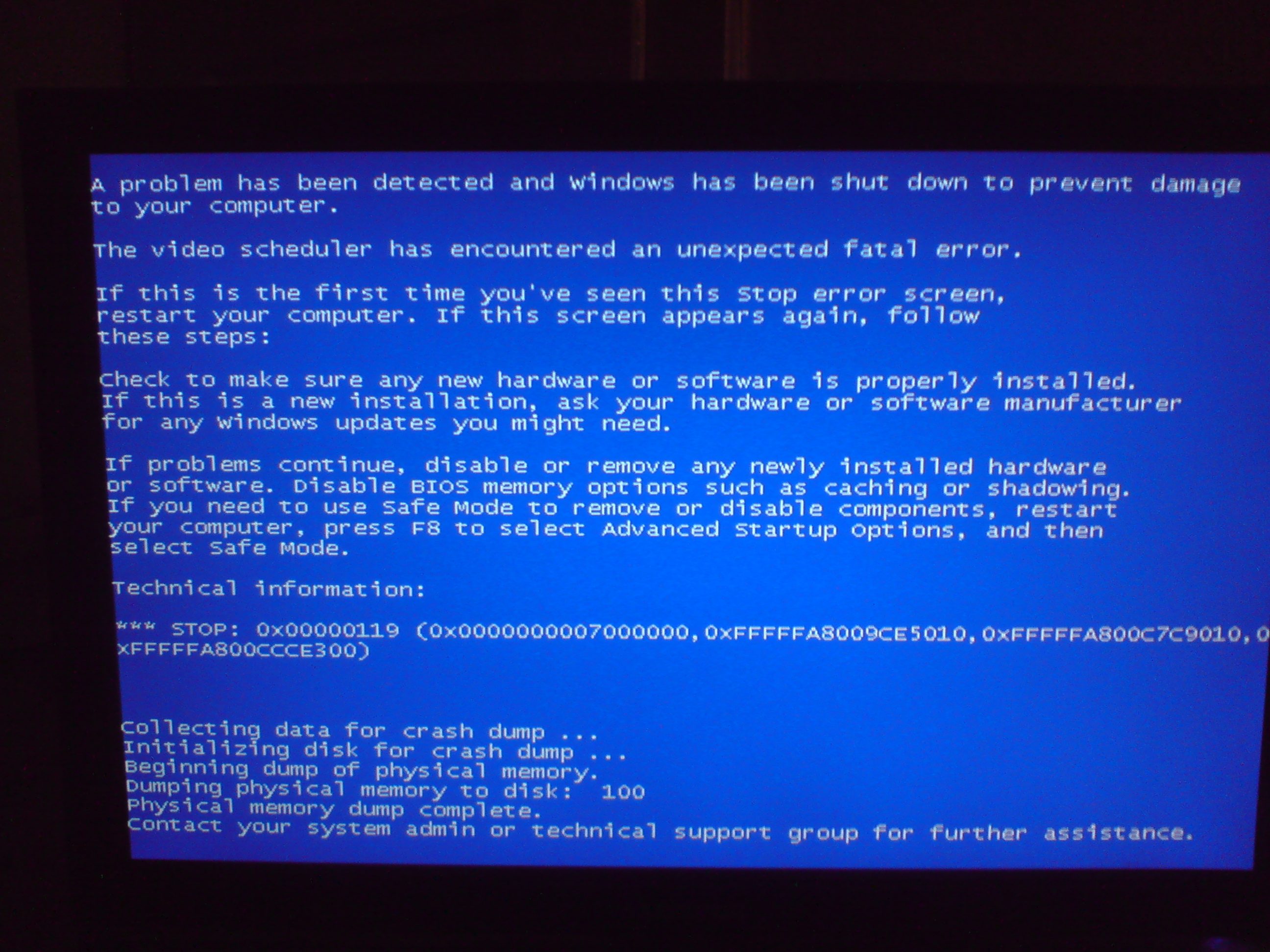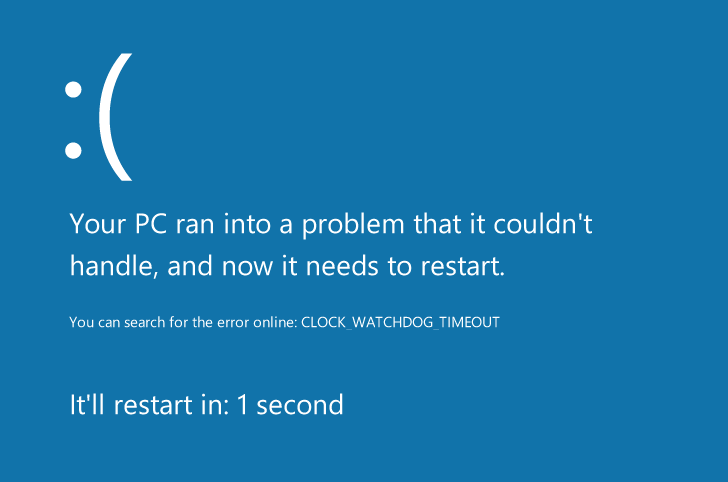| ウェブサイトをできるだけ多くの言語で地域化しようとしていますが、このページは現在Google Translateにより機械翻訳されています。 | 終了 |
-
-
製品
-
資料
-
サポート
-
会社
-
“Video Scheduler Internal Error” と表示される Windows エラー画面の対処法A Guide to the “Video Scheduler Internal Error” Blue Screen of Death Error
バイ Steve Horton 2月 04, 2013Blue Screen of Death, bsod, video_scheduler_internal_error17 Commentsエラー名:VIDEO_SCHEDULER_INTERNAL_ERROR
あなたが死のブルースクリーンに遭遇したようです。幸いにも、あなたはそれがあなたに与えたエラーを文書化するのに十分なほどスマートで、オンラインで情報を探しました。ここであなたの努力が報われる場所です。以前のバージョンのWindowsを使用している場合、BSODは次のようになります。

ビデオスケジューラの内部エラーしかし、Windows 8を使用している場合は、次のようになります。

Windows 8 BSoDの例それでは、VIDEO_SCHEDULER_INTERNAL_ERRORに行ってみましょう。死のブルースクリーンは、コンピュータが処理方法を知らないものに遭遇したときに起こります。それで、それ自体がシャットダウンされ、その問題が自分自身を救うことであったことがわかります。それは死のブルースクリーンと呼ばれていますが、問題は通常それほど深刻ではなく、コンピュータの電源を入れ直しても再発しない傾向があります。ただし、ここにいる場合はそうでない可能性があります。問題の原因を突き止めて、問題を解決できるようにする必要があります。
これが「本当のBSOD」であることを確認することから始めましょう。 BSODは偽装することはできませんが、ウイルス、マルウェア、構成の悪いプログラムなどの問題が原因である可能性があります。 AVGを使用している場合は、ツールでAVGを削除してください。ウイルスをチェックするには、別のウイルス対策ソフトウェア(個人的にはAvastを推奨)を使用し、Malwarebytesを使用してマルウェアをスキャンします。一般的な考え方とは異なり、マルウェアとウイルスは実際には2つの異なるものです。この特定のエラーが特定のプログラムのインストール後に開始された場合は、そのプログラムも削除してください。
一度やってしまえば、問題の中核に取り組む時です – あなたのグラフィックスカード、あるいは私たちが好むように、GPU – です。 GPUは現在あなたの画面に表示されているすべてのものを処理し、VIDEO_SCHEDULER_INTERNAL_ERRORはそのGPUのドライバの問題が原因です。
ドライバとは、コンピュータに接続されているデバイスを動作させるためのものです。キーボードのドライバは、たとえば、特定のキーを押すと、画面に表示される文字を決定するものです。これらはすべてを動作させるものです。設定に問題がある場合は、システムに問題が発生します。
まずは、 スタート (Windows 8 ではWindowsキー+ X )を押し、 検索をクリックして「 デバイスマネージャー 」と入力して、使用しているグラフィックスカードを見つけます。 「 ディスプレイアダプタ 」メニューの下に、グラフィックスカードの名前が表示されます。 Windows内からドライバをアップグレードしようとしたが、それでも問題が解決しない場合は、製造元のWebサイトにアクセスしてドライバを手動で適用してください。また、システム内の古いドライバをアップグレードし、Windows Updateを使用してオペレーティングシステムをアップグレードすることもお勧めします。
Driver Reviverを使用してグラフィックドライバを自動的に更新することもできます。
これらのことすべてを済ませたら、もう問題はないはずです。しかし、まだ遭遇している場合は、Microsoft、ビデオカードメーカー、または登録された技術者に連絡して、より高度な修復オプションを調べる必要があります。
Was this post helpful?YesNoPinterestにピン留めする